Things to do in Barcelona
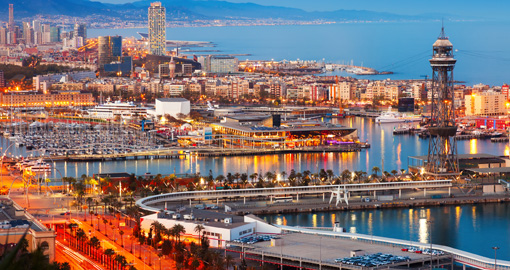
Capital of Catalonia. The city of Gaudi, Picasso, and Dali. The city of one of Europe’s most famous urban beaches (which wasn’t actually there until pre-Olympic renewal). Barcelona is a city that seems made for unforgettable images and experiences. It’s possible to spend weeks here and not see it all, but here are some highlights you should not miss.
La Sagrada Familia
Spain’s most famous building, and it’s not even finished! Sagrada Familia is Antoni Gaudi’s masterpiece, his final resting place, and the ultimate symbol of Barcelona. Finally consecrated in 2010 after 128 years of construction, the cathedral has a proposed finishing date between 2026 and 2028. Many travellers skip the entrance ticket, asking ‘How interesting can the inside of an unfinished church be?’ But the interior, not unlike the rib cage of some soaring, extra-terrestrial creature bathed in coloured light, is one of Barcelona’s most glorious sights, leaving little doubt that Gaudi’s greatest creation will be worth the wait. The architect’s crypt is located on the lower level and can be glimpsed from above.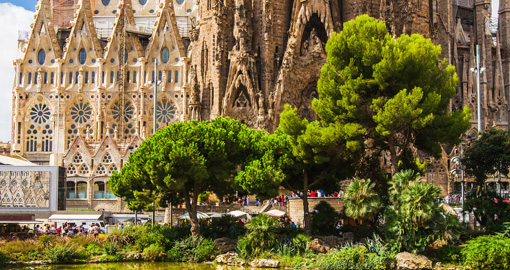
Barrio Gotic
Defined by the ancient streets and back-alleys of Barcelona, with a history pre-dating Roman times, the Gothic Quarter is Barcelona at its most romantic and evocative – if not its most authentic. The ‘Gothic’ aspects of the neighbourhood were enhanced for tourists in the late 19th and 20th centuries, but we’re not going to argue with the results. Underneath are centuries of very real Barcelona history, including the Roman and Medieval walls. Drop into the Barcelona City History Museum to see the ruins of ancient Roman Barcelona firsthand.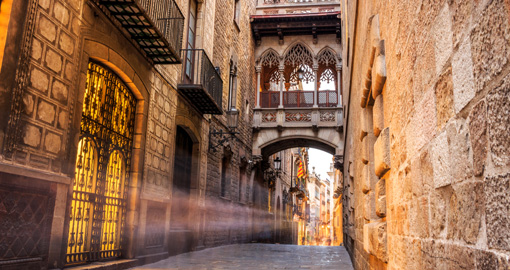
Tapas Catalan
As we’re sure you already know, Catalonia is not just another part of Spain. It has its own history, culture, identity, language, and, oh yes, the food! There are some important differences from cuisine found in other regions of Spain, most notably the tendency to mix meat and seafood in the same dish – called mar i muntanya (sea and mountain) in Catalan. Expect a lot of garlic, along with vegetables carefully burnt on the outside to give them a rich, smoky flavour. The city’s willingness to experiment attracts chefs from around the world. Go along with the innovations, and you’ll understand the appeal.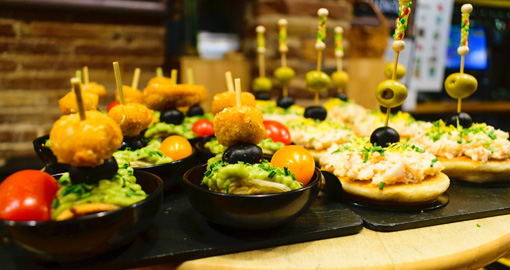
Park Guell
One of two great commissions Antoni Gaudi did for the wealthy Guell family, many of the architect’s fantastic flourishes have become symbols of Barcelona. From decorative mosaic lizards to crucifix-bedecked spires atop what look like gingerbread houses, the entire park is like a surreally beautiful dream. The views over the city out toward the Mediterranean aren’t bad either! A small, but controversial entrance fee has been applied to the monumental zone, where most of Gaudi’s creations are located, since 2013.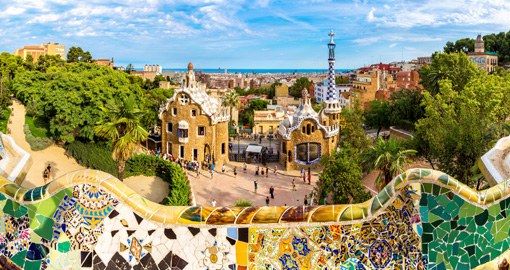
Casa Mila and the Masterpieces of Modernisme
If you’re pressed for time, consider doing a guided Modernisme walk. Though unlikely to include entry to the buildings, it will at least take you to see as many of the facades as possible. A number of the most famous Modernista homes designed for Barcelona’s wealthy can be found on the city’s grand Passeig de Gracia, including Casa Mila, which is worth the price of admission if you only have time to go inside one. Informally known as La Pedrera (the quarry) this undulating apartment complex boasts one of the most photographed roofs in the world. It covers a small museum in the attic explaining some of Gaudi’s techniques. If you’d rather just bask in the architect’s dazzlingly imaginative aesthetic, book a ticket for Casa Batllo instead, which overlooks Passeig de Gracia like a great dragon or sea creature with its skeletal, yet beautiful façade. Other famous creations worth a visit include Palau Guell, Casa Vicens, Casa Amatller and Casa Lleo Morena.
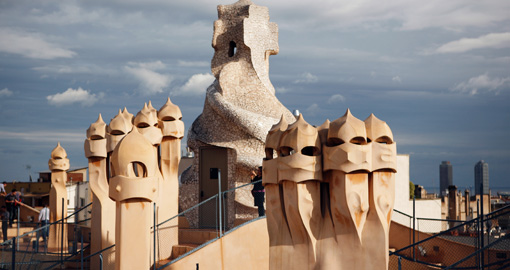
Stroll La Rambla
Yes, it’s jammed with tourists almost any hour of the day. But a walk down this leafy pedestrian artery, even just once, is an essential Barcelona experience. Poet Frederico Garcia Lorca called it ‘the only street in the world which I wish would never end,’ and we defy anyone to disagree. Duck into the popular La Boqueria market when it’s time for a snack, or break up the walk with a visit to Palau Guell, a stone’s throw away. Just watch your pockets and bags, and don’t dine directly on the promenade, unless you want to pay a hefty premium for pretty much everything.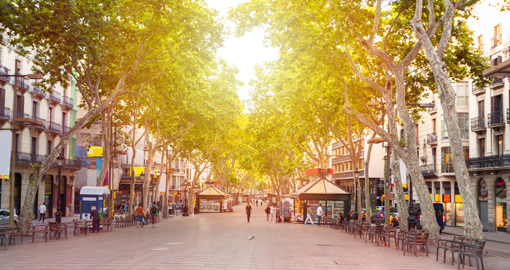
Palau de la Musica Catalana
Not one of Gaudi’s, but a jaw-dropping triumph of Modernista architecture that deserves a special mention. Designed by Lluis Domenech I Montaner, Barcelona’s main concert hall dazzles, even from the street, with the seemingly endless intricacies of its façade. Go inside and feast your eyes on its magnificent concert hall, which can only be described as a visual symphony worthy of any work playing on stage.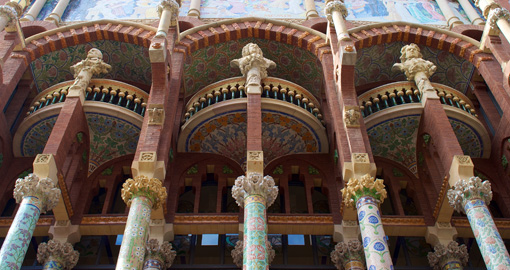
Museo Picasso
Don’t expect to find many of the master’s contorted creations here. This museum is mostly about Pablo Picasso’s earlier work, defining his vision before he was hailed as one of the 20th century’s great painters. With over 4,000 works on display, it’s one of the largest Picasso collections in the world, all set in an attractive series of medieval palaces.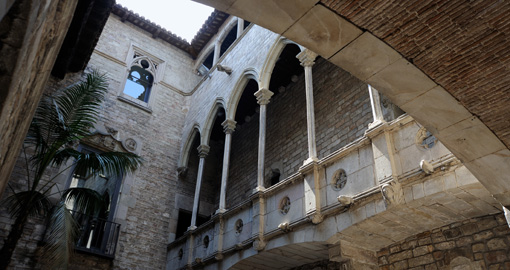
Montjuic
On a fine day, a trip up Montjuic is one of Barcelona’s best days out. Start at The Magic Fountain, then dive into either the Palau Nacional art museum or the Fundacio Miro if you’re a particular fan of Joan Miro’s work. If you’re more of a sports fan, the mountain is home to many of the venues used during the 1992 Olympic Games. It’s a rewarding corner of the city just to explore at your own pace.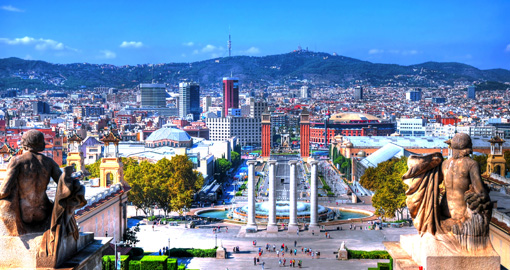
Camp Nou
If you’re a football/soccer fan, Camp Nou isn’t a tourist attraction, it’s a pilgrimage (your non-fan travel companions can visit the revived beach district of La Barceloneta instead). Come on a day with no game scheduled, and you can enjoy a full tour of FC Barcelona’s hallowed home grounds, and of course, the museum is open year-round.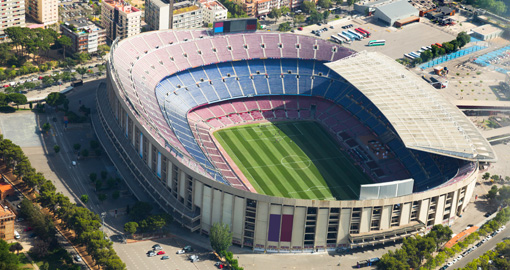
BUDGET AND CURRENCY
Spain uses the Euro and is generally a solidly mid-priced destination. Barcelona’s uniqueness, however, drives demand and prices up, particularly when it comes to accommodation. You’ll want to budget extra for attractions too, particularly if you want to see those Modernista interiors, which range from 12-25 EUR each, plus optional extras. Provided you aren’t dining right in tourist hotspots, meals are less intimidating, coming in at around 12 EUR for something basic, or 40-45 EUR for a mid-range, 3-course dinner for two. A pint of local beer will set you back just 3 EUR, though wine is usually preferred. Catalonian tapas is an essential Barcelona experience, but keep in mind, that those little plates add up fast.
LOCAL LAWS AND ETTIQUETTE
Your biggest adjustment is probably going to be adapting to Spanish dining hours. Nobody sits down to dinner before 9 pm. Meals also tend to be slow and leisurely. As for nightlife, you’ll find many local bars empty until midnight, and clubs empty until at least 2 am. With so much to see in Barcelona during the day, a pre-dinner nap can be invaluable. On a more political note, respect that Catalonia is a separate entity from Spain, but don’t presume how any one resident of Barcelona will see the situation or themselves (Catalonian, Spanish, both, neither…), nor how they might feel about Catalonian independence. The subject is as complicated and contentious as you’d expect, particularly following 2017’s referendum.
LANGUAGE
Both Catalan and Spanish are widely used. Locals will often appreciate an effort to speak the former, but even a sincere attempt at Spanish as a foreigner will earn you points. In fact, you may need it. English isn’t as widespread as it is in many major European cities, though some basic French can come in handy.
Get a Trip Quote Order a Brochure

















